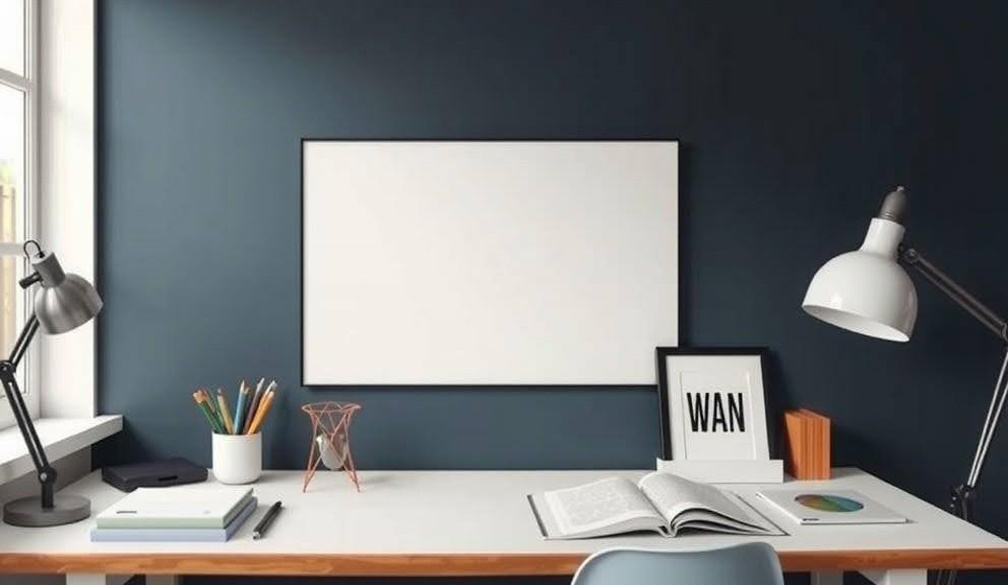The Art of Typography in Poster Design: A Comprehensive Guide

Typography is the silent ambassador of your design, speaking volumes before the viewer even reads a word. When it comes to poster design, the right typographic choices can mean the difference between a forgettable piece and one that commands attention and effectively communicates its message. The interplay of fonts, sizes, spacing, and hierarchy creates a visual language that guides the viewer's eye and establishes the tone of your communication.
Understanding the fundamentals of typography is essential for anyone interested in home decor and wall art. Australian homeowners looking to enhance their living spaces can benefit greatly from recognizing how different typographic styles contribute to the overall aesthetic appeal of their walls. When readers want to apply these typography principles in their homes, they can easily Discover wall art from Posterstore where they'll find professionally designed posters with effective typography that enhances their living spaces. The careful selection of typography in wall art can transform a room, creating focal points that reflect personal style while maintaining visual harmony within the space.
The foundation: readability and visual hierarchy
The primary purpose of typography in poster design is to communicate information effectively. Readability should always be your first consideration when selecting fonts for your poster. According to design experts, key information on posters should be legible from approximately five feet away, emphasizing the critical importance of font size and clarity. Sans-serif fonts like Arial and Helvetica are generally more readable from a distance, making them ideal choices for poster headlines and important text elements.
Effective poster design typically follows the 20-40-40 rule: 20% text, 40% figures, and 40% white space. This balanced distribution ensures that typography doesn't overwhelm the viewer but instead works harmoniously with other design elements. The strategic use of white space around typography allows the text to breathe and enhances readability, preventing the poster from appearing cluttered or difficult to parse at a glance.
Aesthetic appeal: matching typography to message
The emotional impact of typography cannot be overstated. Different font styles evoke different feelings and associations, making the selection process much more than a practical consideration. Serif fonts often convey tradition, reliability, and formality, while sans-serif fonts project modernity, cleanliness, and straightforwardness. Script fonts suggest elegance and creativity, while display fonts can add personality and distinctive character to your poster design.
The typography you choose should align with the content's tone and intended emotional response. A poster for a corporate event might benefit from the professionalism of a clean sans-serif, while an art exhibition announcement might call for something more expressive or unique. Color also plays a significant role in typographic impact, with high contrast between text and background colors significantly improving both readability and visual impact. Design experts typically recommend limiting your color palette to two or three colors to maintain visual cohesion and avoid overwhelming the viewer.
Technological advancements in typographic design
The digital revolution has transformed how we approach typography in poster design. Beyond the traditional considerations of font selection and arrangement, designers now have access to a wealth of digital tools that offer granular control over every aspect of typography. These advancements have democratized design, making sophisticated typographic techniques accessible to both professionals and enthusiasts alike.
Emerging technologies are further expanding the possibilities of typographic poster design. Recent developments in AI and machine learning are creating new avenues for automated typographic poster generation, with research focusing on heuristic metrics for evaluating these designs based on legibility, aesthetics, and semantic features. These technologies analyze factors such as contrast ratios, spacing, and alignment to optimize readability while maintaining aesthetic appeal, potentially revolutionizing how we approach typography in the future.
The integration of responsive typography in digital posters represents another significant advancement in the field. Unlike traditional static posters, digital displays can adjust typography based on viewing distance, ambient lighting conditions, or even viewer demographics. This adaptability ensures optimal readability regardless of the viewing context, making digital posters increasingly effective communication tools in public spaces, retail environments, and corporate settings.





